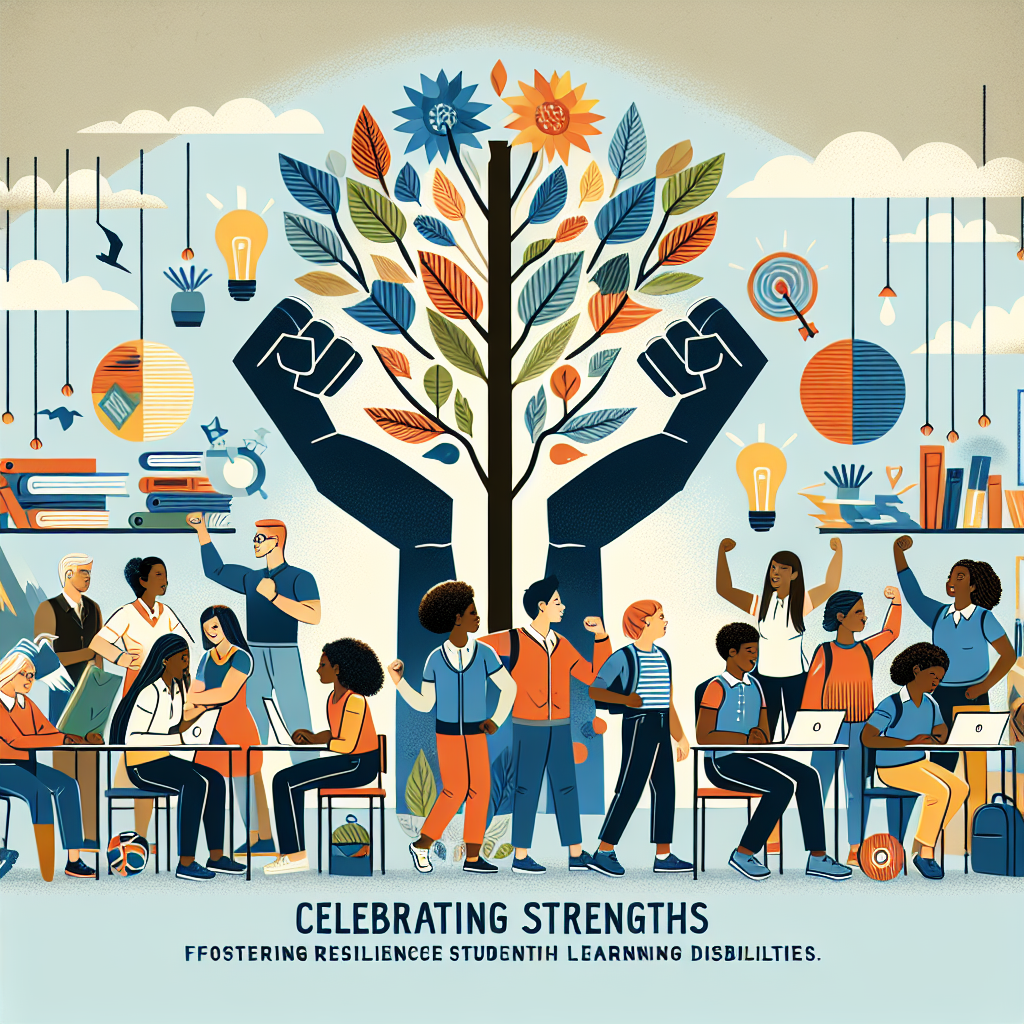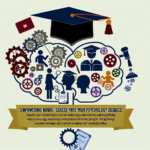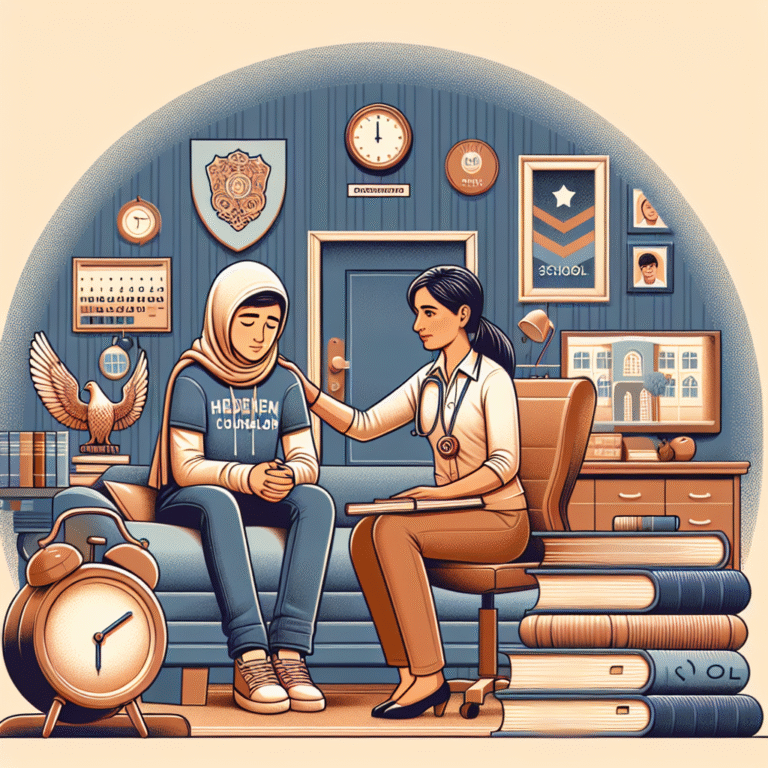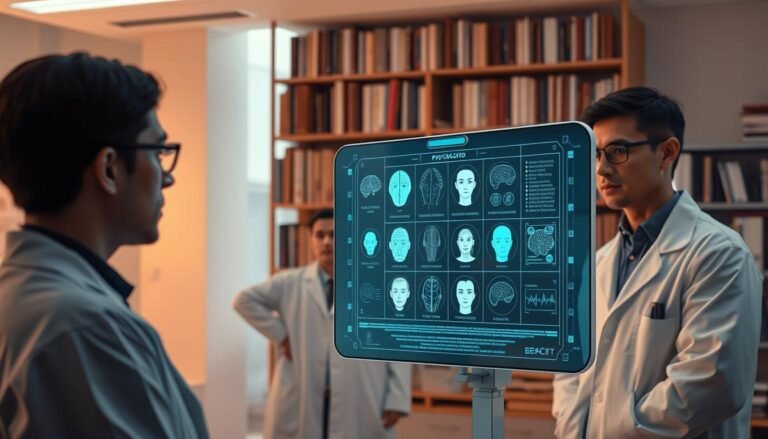
Introduction: The Power of Positivity
Every student has a story to tell, but for those with learning disabilities, the narrative can often take unexpected turns. While these challenges are significant, the true potential lies in recognizing and celebrating the unique strengths that each student possesses. "Celebrating Strengths: Fostering Resilience in Students with Learning Disabilities" is not just a theme; it’s a transformative approach redefining education and empowerment.
Why Celebrate Strengths?
In a world often focused on deficiencies, it’s essential to spotlight the remarkable abilities that students with learning disabilities demonstrate daily. This positive affirmation fosters resilience, enhances self-esteem, and ultimately contributes to academic success. Research shows that when students feel valued for their strengths, they become more engaged learners, ready to tackle challenges head-on.
Understanding Learning Disabilities
What Are Learning Disabilities?
Learning disabilities encompass a range of disorders that affect how individuals process information. These can include dyslexia, dyscalculia, dysgraphia, and more. While each student may operate differently, they all share an overarching narrative of resilience against misunderstanding and stigma.
Table 1: Common Learning Disabilities
| Learning Disability | Description | Challenges Faced |
|---|---|---|
| Dyslexia | Difficulty reading | Reading fluency, comprehension |
| Dysgraphia | Difficulty writing | Handwriting, spelling |
| Dyscalculia | Difficulty with math | Number sense, calculations |
| ADHD | Attention regulation issues | Focus, organization |
The Importance of Resilience
Resilience is the ability to bounce back from adversity. For students with learning disabilities, building resilience is vital. It enables them to navigate academic pressures, manage frustrations, and ultimately thrive in their educational environments. Research shows that resilient students are more likely to adopt positive attitudes, persist in their efforts, and achieve long-term goals.
Celebrating Strengths: The Framework
To effectively celebrate strengths and foster resilience, a framework is necessary. This framework includes:
- Recognition of Unique Abilities
- Creating Supportive Environments
- Promoting Growth Mindset
- Encouraging Peer Support
1. Recognition of Unique Abilities
Celebrating strengths starts with identifying and valuing the unique abilities each student offers. For instance, a student with dyslexia might struggle with reading but excel in artistic expression. Turning the spotlight on these skills builds confidence and lays the foundation for further learning.
Case Study: The Power of Art
Consider Emily, a 10-year-old girl diagnosed with dyslexia. While traditional reading assessments were a challenge, her teachers recognized her remarkable talent in visual arts. They incorporated art into her learning process, allowing her to express concepts creatively. As a result, Emily’s confidence flourished, and she improved in her reading and comprehension through visual storytelling. This case illustrates the impact of recognizing individual talents to boost overall resilience.
2. Creating Supportive Environments
A supportive environment is crucial for fostering resilience in students with learning disabilities. This includes:
- Inclusive Classrooms: Differentiated instruction and learning accommodations.
- Positive Reinforcement: Encouraging achievements, no matter how small, can motivate students to persist.
- Parent and Community Involvement: Engaging families and communities to create a robust support system.
Table 2: Strategies for Support
| Strategy | Description |
|---|---|
| Differentiated Instruction | Tailoring teaching methods to meet individual needs |
| Positive Reinforcement | Celebrating small wins to build confidence |
| Community Engagement | Involving parents and local mentors for support |
3. Promoting Growth Mindset
To cultivate resilience, students must adopt a growth mindset, which is the belief that abilities can be developed through effort and persistence. This concept is fundamental in education, especially for students with learning disabilities.
Case Study: From Frustration to Inspiration
Mark, a high school student with ADHD, often found himself overwhelmed by academic assignments. His teacher introduced him to the concept of the growth mindset, encouraging him to view challenges as opportunities to improve. Over time, Mark learned to manage his time better and approach his assignments with a newfound determination. His progress underscores the importance of instilling a growth mindset to transform challenges into successes.
4. Encouraging Peer Support
Peer relationships significantly influence resilience. Encouraging collaborative projects or study groups can foster a sense of belonging and mutual support. When students work together, they can share strengths, challenge one another, and create a more inclusive environment.
Case Study: Buddy Programs
Schools implementing buddy programs, where students with learning disabilities are paired with peer mentors, have reported positive impacts on both groups. This mentorship encourages knowledge sharing, builds empathy, and reduces stigma.
Fostering Resilience through Curriculum
Integrating Life Skills
The curriculum should extend beyond traditional academic topics. Incorporating life skills, such as problem-solving, emotional regulation, and self-advocacy, can empower students. These skills are pivotal for overcoming personal and academic challenges.
Table 3: Life Skills to Foster Resilience
| Life Skill | Importance |
|---|---|
| Problem-Solving | Enhances decision-making abilities |
| Emotional Regulation | Supports emotional well-being and coping strategies |
| Self-Advocacy | Empowers students to communicate their needs |
Celebrating Strengths in Action
Real-World Applications
Successful schools and educators are already applying these strategies. For example, a school district in California initiated a district-wide program focused on "Celebrating Strengths." This program included workshops for teachers, parents, and students to identify individual strengths and create action plans to leverage these abilities in their educational pursuits.
Case Study: The Transformational Impact
This initiative resulted in improved academic performance across the board. The most significant success stories emerged from students who previously struggled with low self-esteem. By focusing on celebrating strengths, educators fostered a community atmosphere where resilience flourished.
Conclusion: The Path Forward
Celebrating strengths is not merely about acknowledging what students can do; it is about building a nurturing environment that fosters resilience. As we focus on "Celebrating Strengths: Fostering Resilience in Students with Learning Disabilities," we take vital steps toward shifting the educational narrative.
Inspirational Takeaway
Every challenge presents an opportunity for growth. By celebrating strengths, we empower students with learning disabilities to embrace their unique abilities, cultivating a resilience that will serve them throughout their lives.
FAQs
1. How can parents help celebrate their child’s strengths?
Parents can encourage their child by recognizing and verbalizing their talents. Engaging in activities that showcase their interests and strengths can build confidence.
2. What role do teachers play in fostering resilience?
Teachers are pivotal in recognizing students’ strengths, providing support, and creating an inclusive environment that celebrates diversity in learning.
3. Can celebrating strengths lead to improved academic performance?
Yes, when students feel valued and recognized for their strengths, their engagement and motivation increase, often leading to improved academic performance.
4. How can I promote a growth mindset in my classroom?
Incorporate discussions on effort versus talent, share stories of persistence, and model resilience in challenging situations to promote a growth mindset.
5. What resources are available for teachers to help students with learning disabilities?
Numerous resources exist, including specialized training programs, workshops, and online platforms that provide strategies and tools tailored for educators.
By adopting the approach outlined in "Celebrating Strengths: Fostering Resilience in Students with Learning Disabilities," educators and caregivers can effectively change the classroom landscape, creating spaces where every student has the opportunity to thrive. Each child, equipped with their unique strengths, can transform challenges into paths of resilience and success.

















